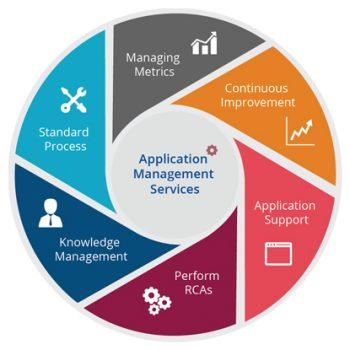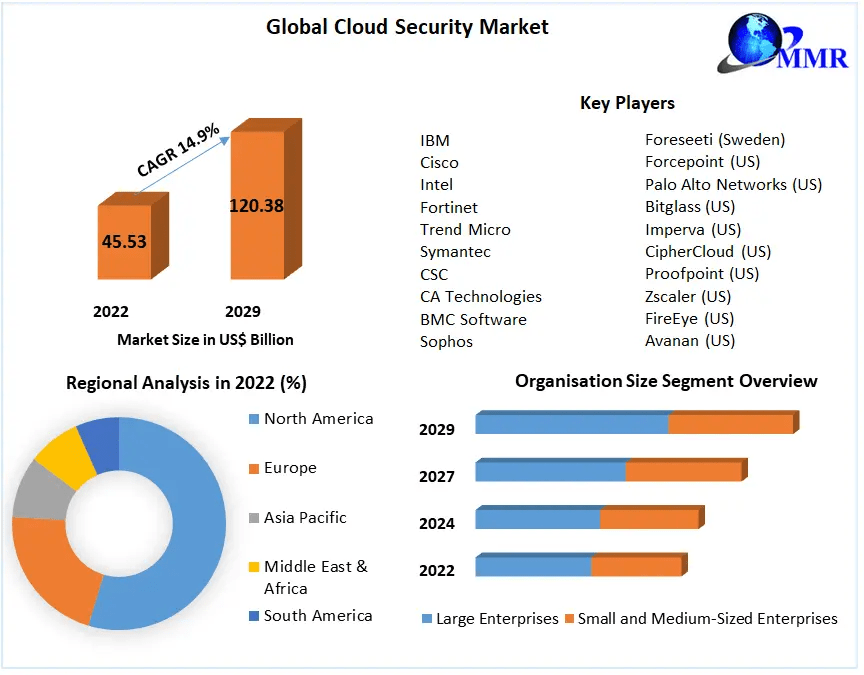The Emerging Trends of Cybersecurity in 2023
As we enter 2023, the cybersecurity market is rapidly expanding, bringing with it a variety of new concerns and threats. Cybercriminals’ strategies are becoming more sophisticated, utilizing cutting-edge technology and exploiting loopholes in digital systems.
Businesses need to be prepared for new and emerging risks and adjust their strategy to the ever-changing global economy in order to stay ahead of the competition. This article will discuss the top seven cyber security trends in 2024, as well as what to expect in cyber security in the future.
The Top 7 Emerging Cybersecurity Trends in 2023
1. Scarcity of Cybersecurity Experts
According to recent global research, around 71% of IT and cybersecurity workers have felt the impact of cybersecurity skills shortages within their organizations. Because of the expanding skills gap, cybersecurity teams are dealing with higher workloads, unfilled job openings, and greater burnout. The majority of survey respondents said the situation has worsened in recent years, with 54% saying it has become worse.
2. Supply Chain Attacks on Rise
Companies all across the world rely on supply chains to obtain their necessities. These supply networks span several locations and process chains. Given the number of stakeholders or checkpoints in the supply chain, protecting it from threat actors becomes difficult. Monitoring third-party risks and potential real-time supply chain breaches is therefore critical for establishing resilience.
3. Role of Artificial Intelligence (AI)
As the number of attempted cyberattacks has increased significantly, human cybersecurity specialists have found it increasingly difficult to respond to them all and forecast where the most hazardous assaults will occur next. Machine learning algorithms can analyze large amounts of data streaming across networks in real-time considerably more effectively than people can and learn to spot patterns that suggest a threat.
4. Need for Cloud Security
Despite the popularity and benefits of cloud management services as a cost-effective and flexible means to grow, most cloud solutions, shockingly, lack basic security safeguards. When it comes to cloud security, fraudsters may still circumvent organizations’ internal standards in areas such as authentication, auditing, encryption, and data and analytics management.
5. Remote Working Security
Organizations should deploy robust security protocols such as VPNs, multifactor authentication, and endpoint/mobile device security solutions to guarantee secure remote and hybrid work. Employees should also be educated on recognizing dangers and cybersecurity measures, as well as the need for robust password hygiene.
6. Identity and Access Management
To maintain IT security, IAM security manages digital identities and regulates access to data, systems, and resources. It consists of policies, technology, and initiatives targeted at lowering identity-related risks and increasing enterprise security. Organizations may use IAM solutions to mitigate risks, comply with laws, and optimize operations.
7. Phishing Attacks on the Rise
Social engineering assaults that deceive people into granting attackers access to systems will also get more sophisticated. Deepfake assaults will become more common as generative AI (such as ChatGPT) technologies enable more attackers to take better, more tailored tactics. The reaction will mostly focus on increasing organizational awareness and education, but AI and zero trust will also play important roles.
Which Industry Needs Cybersecurity the Most?
Cybersecurity is required in almost every industry to protect digital assets from attacks. Here are the industries that seek more attention toward cybersecurity:
1. Small Business
Small and medium-sized enterprises don’t have the same level of data security as bigger corporations. As a result, they are more vulnerable to cybercrime and data theft. Furthermore, smaller businesses frequently lack major rehabilitation capabilities following an assault. When a larger organization’s user data is stolen, it usually has a plan in place to restore consumer trust. Smaller businesses, on the other hand, are often unprepared for such disasters.
2. eCommerce
eCommerce firms keep a large amount of information about their clients in order to process orders and send items. This data contains phone numbers, emails, addresses, payment information, and other details. If hackers are able to circumvent the security procedures, they will be able to obtain all of that information and sell it to fraudsters, criminals, and social engineers. A compromise in an eCommerce database might endanger hundreds of thousands of clients.
3. Governmental Organizations
Hackers are increasingly attacking government institutions and political organizations in order to steal sensitive information or disrupt political processes. Campaigns, state and federal registrations, healthcare databases, and judicial information all entice cybercriminals. Effective cyber security methods, such as data encryption, password protection protocols, cyber security policy review and training, and continuous penetration testing, are essential to secure these systems.
4. Finance
In 2021, 74% of financial businesses reported an increase in cyber threats associated with the COVID-19 outbreak. Financial institutions are unsurprisingly at the top of hackers’ priority lists. This trend will very definitely continue as more customers convert to Internet banking. Financial institutions must make further efforts to protect themselves and their customers from digital threats.
Conclusion
As a result of these cybersecurity trend changes, organizations will be increasingly hesitant to stack their security measures in 2024. This year, organizations are expected to spend more on asset protection than ever before, with predictions of $100 billion or more.
Infrastructure security has become a crucial element of almost every business today. It would be prudent for firms to begin their search for cybersecurity service providers today to protect their assets tomorrow.




